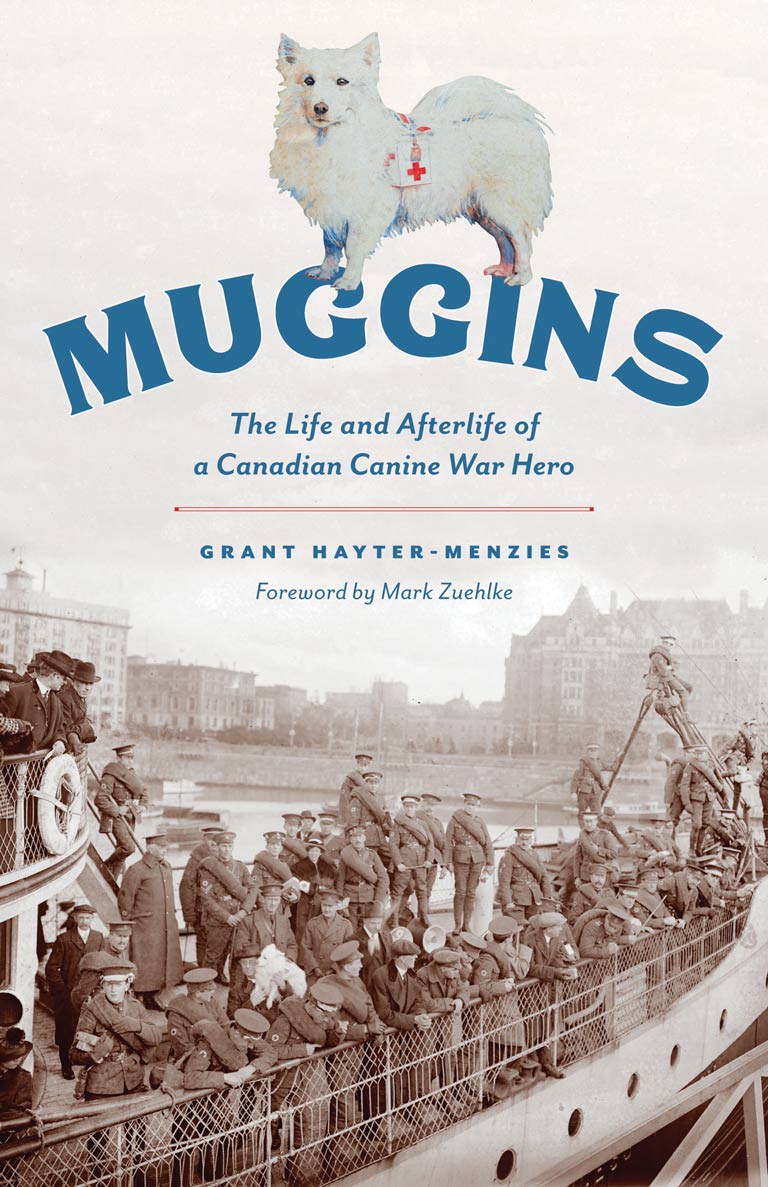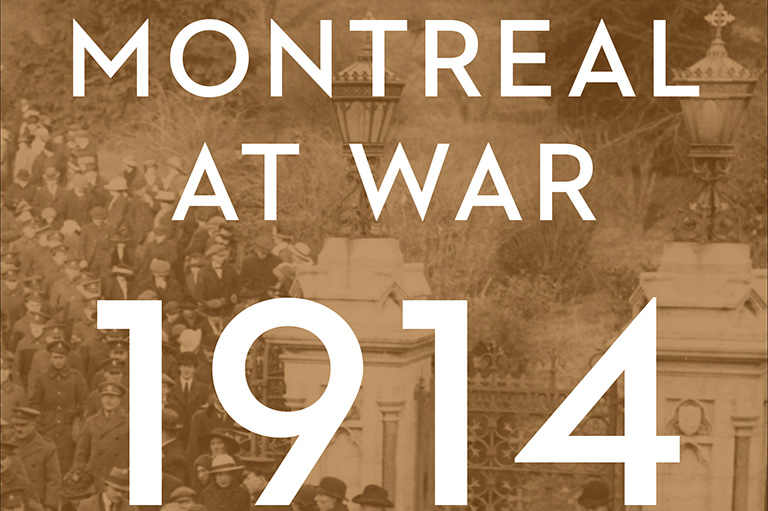Muggins

Muggins: The Life and Afterlife of a Canadian Canine War Hero
by Grant Hayter-Menzies
Heritage House
216 pages, $22.95
The Great War of 1914 to 1918 continues to haunt Canadians more than one hundred years later, but it’s the stories of individuals, their personal struggles and strains, that help us to better connect with the people and events of that time. This fine book chronicles a four-legged hero — a purebred spitz named Muggins.
Bright-eyed and sharp-nosed, the fluffy dog was a fixture from 1916 on the streets of Victoria, where he walked among people with two little donation boxes fastened to his sides. The plucky dog raised over $21,000 (today’s equivalent is $400,000), as pennies and dimes were dropped into his boxes in support of many humanitarian causes. In the hyper-charged patriotic wartime environment, Muggins became widely known throughout the city and country, and even in other parts of the British Empire.
Animal historian Grant Hayter-Menzies recounts this story with much empathy for Muggins, situating the fundraising within the war effort. At a time when Canadians were told to “do their bit” and to “fight or pay,” millions of dollars were raised by various means in support of soldiers, prisoners of war, and overseas refugees.
Using Muggins as his book’s central character, Hayter-Menzies spins off multiple additional stories, ranging from the role of animals at the front, to Victoria at war, to Muggins’ many encounters with soldiers, generals, and royalty. The dog was twice robbed and once abducted — and yet still he walked the streets or stood at key spots where supporting signs alerted passersby to donate. Muggins had an uncanny ability to stare people in the eyes, and when coins were deposited in his satchels he would bark in affirmation.
Reflecting the spirit of the age, Muggins was featured in songs, on postcards, and in newsreels. Mary Riter Hamilton, who went overseas in 1919 to paint battlefields, captured the wee dog in a portrait. Soldiers wrote about him during the war, and years later elderly Canadians recounted their interactions with the canine.
Muggins was adept at finding his marks, often walking to the docks of Victoria’s inner harbour as ships drew near. “The minute the gangplank touched the pier,” wrote one eyewitness, “Muggins would … run on the board to collect what money he could.”
Hayter-Menzies has drawn widely from published and unpublished material to reconstruct this story; he even walked the streets of Victoria with his own dog, Freddie, the two of them revisiting the sites where Muggins carried out his work. Rarely seen photographs provide further insights. They include an image of Sir Arthur Currie, the former Victoria real estate developer and First World War Canadian officer, that depicts his return to the city in 1919 and indicates the dog’s celebrity status — Currie posed with Muggins for the photograph.
After Muggins fathered a pup named Vimy Ridge, the master fundraiser died in 1920. His fame led to his body being preserved through taxidermy, and it was employed to raise funds during the Second World War. While Muggins’ body deteriorated over time, this book provides some of the many fascinating stories from the Great War that bring the era alive for readers today.
With 7 uniquely curated newsletters to choose from, we have something for everyone.
Themes associated with this article
Advertisement




